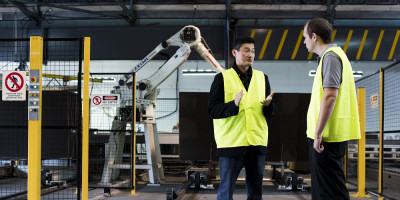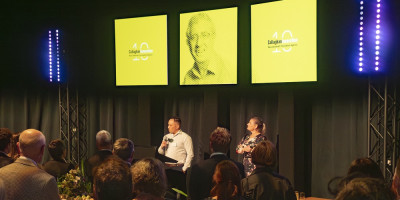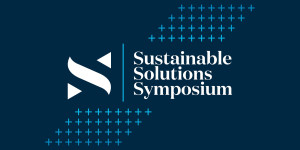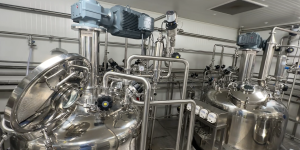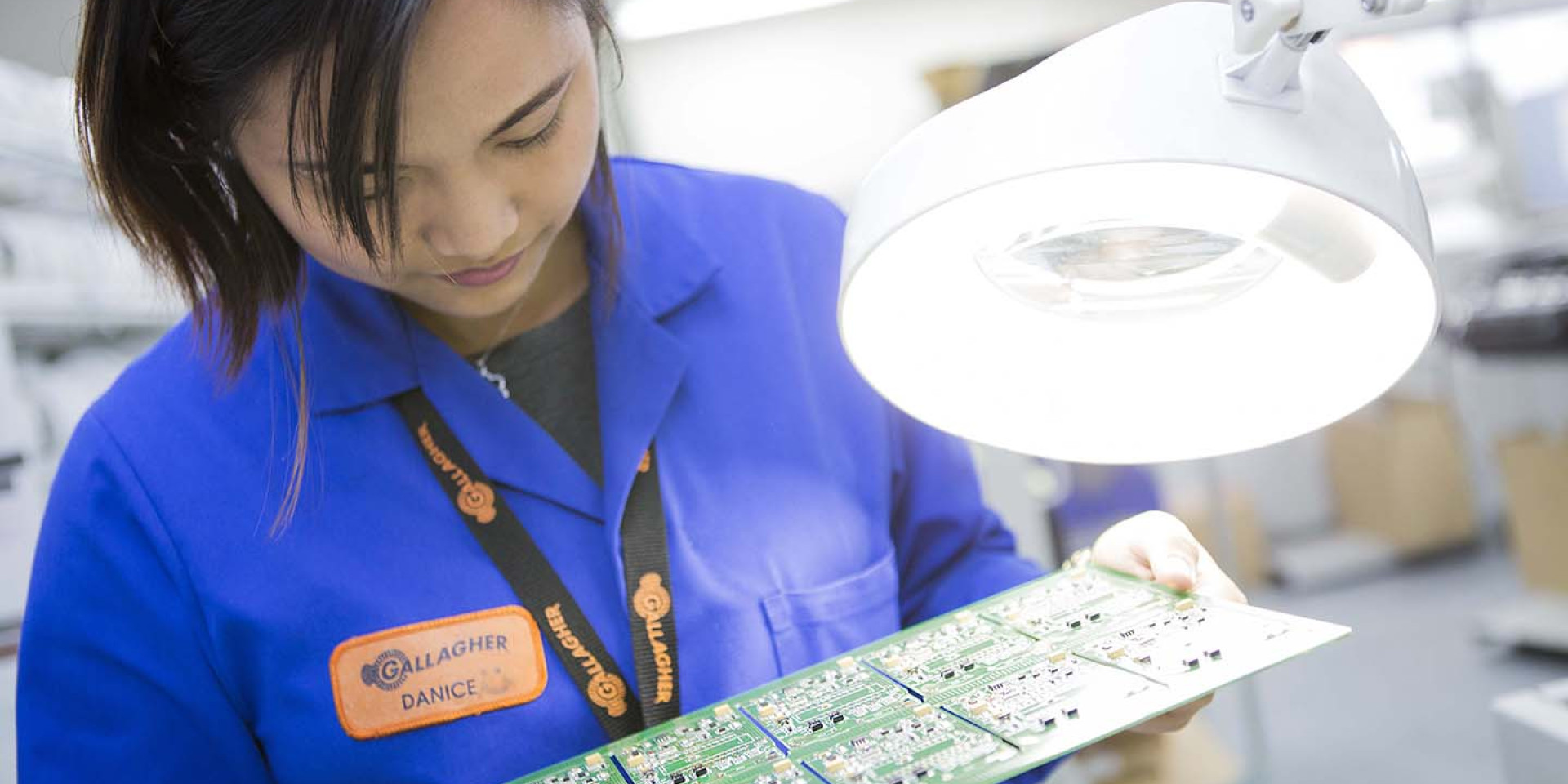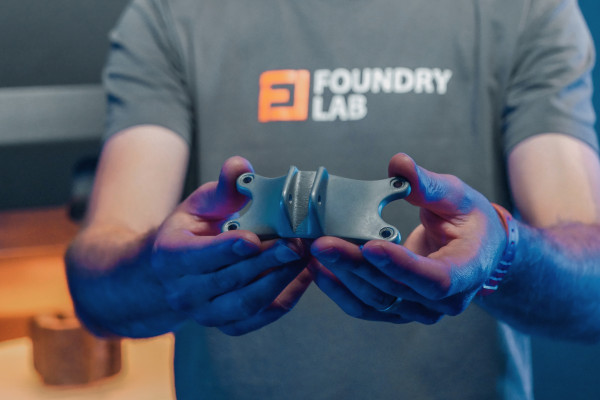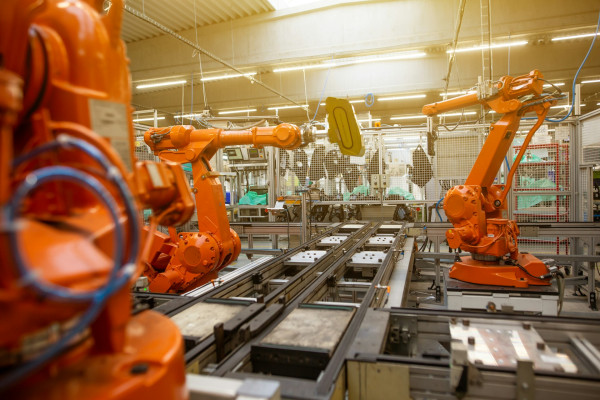Prototyping our Digital Lean programme, helping upskill Kiwi manufacturers in next generation digital tech, it requires working with the best. So we enlisted Tait Communications and Gallagher.
At a glance
- Callaghan Innovation worked with Tait Communications and Gallagher to run a prototype of our Digital Lean programme.
- Using next generation digital solutions, the project helped embed machine learning and data science that for Tait particularly, saw a 21 percent increase in efficiency.
- Common lessons, including a focus on the problem not technology, were pivotal in the programme moving forward and in continuing to help Kiwi manufacturers.
I think we would have been experimenting for a long time, but we just didn’t know what vision stuff was out there without starting this whole project.
- Kevin Holmes, Plastics Value Stream Manager, Gallagher
Prototyping a pathway to digital transformation
It’s not all drones and smart glasses, which is even what Nathan Stantiall, Callaghan Innovation’s Acting Group Manager – Programmes, thought as we embarked on prototyping Callaghan Innovation’s Digital Lean programme in 2018.
“The funny thing is that’s probably the reason it got kicked off, because people liked that story,” says Stantiall. “But it’s not the shiny toys we thought it was going to be. It was actually about data science.”
Looking to upskill Kiwi manufacturers in the next wave of digital technologies, we worked with two leading New Zealand businesses, Canterbury-based communications equipment maker Tait Communications and Hamilton-based animal management and security systems manufacturer Gallagher.
Wanting to harness new technologies to drive practical efficiencies on the factory floor, Digital Lean (Industry 4.0) was put to work, each business focussed on different challenges.
For Tait it was trying to achieve greater efficiencies on its circuit board production lines, and for Gallagher it was about quality control in their injection moulding production. “Every little fault that we found was costing us at least three hours of combined time” says Kevin Holmes, Plastics Value Stream Manager at Gallagher.
What was quickly apparent however, was that it wasn’t about leading with technology, instead the lesson was to lead with the problem.
Partnering with Callaghan Innovation
In February 2018, Tait knew it didn’t have the capacity it would need by June and July, so becoming more efficient was crucial.
Not all changes were ground-breaking, such as updating parts on one line, consolidating machinery, and smoothing out changeovers. But it was the data that could prove transformational, with sophisticated machines collecting a lot of data and algorithms analysing it and turning it into digestible insight for the team.
“Exposing data we didn’t even realise we had, then figuring how to get it, then turning it into something visual was really important for us,” says Dean Mishewski, Manufacturing Engineering Manager at Tait. “The value of being able to visualise things not only helped us draw mostly the right conclusions but also share the reasoning with staff and other stakeholders.”
Gallagher’s experience of the Lean 2.0 prototype project was valuable in a different way. They chose to look at improving the detection of defects in plastic injection moulded components, a previously largely manual and frustratingly inconsistent process.
After first trialling HoloLens, Microsoft’s mixed reality smart-glasses, and quickly realising it wasn’t the right solution, Gallagher moved onto machine learning software to try to accurately identify defects. Unfortunately the software was good, but the camera wasn’t good enough, explains Holmes.
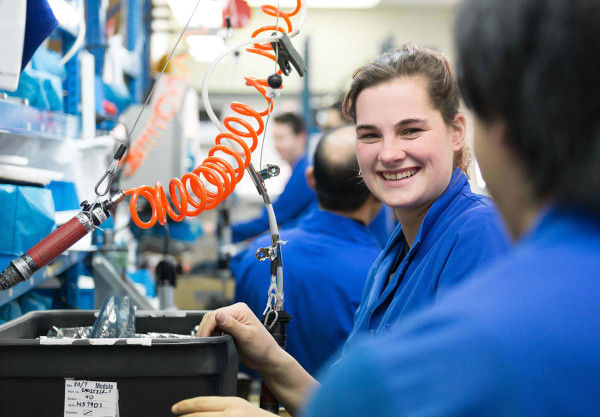
From here they pivoted the project to Gallagher’s electronics department, looking at using the technology to detect faults in printed circuit boards instead.
Gallagher would not have undertaken the work without the support of Callaghan Innovation and the Lean 2.0 prototype.
“I think we would have been experimenting for a long time, but we just didn’t know what vision stuff was out there without starting this whole project,” says Holmes.
Digital Lean starts to come to life
While Tait had hoped to gain a 20 per cent improvement in efficiencies as a result of the project, in fact it saw a 21 per cent increase in productivity in six months on the surface mount technology lines. This number rose exponentially to 37 per cent for one of the lines that had been under the most pressure.
Gallagher on the other hand, with valuable lessons learned and new technology front and centre within the business, are poised to capture the full potential of Industry 4.0, especially as their security business grows by 25 per cent a year.
For us, the prototype projects were pivotal in the journey of Lean 2.0, helping us take a giant step toward launching the Digital Lean (Industry 4.0) programme.



